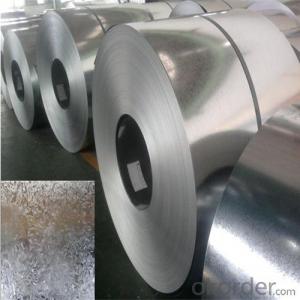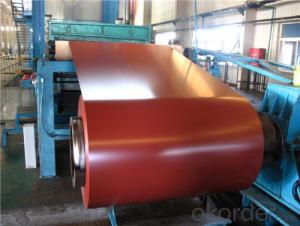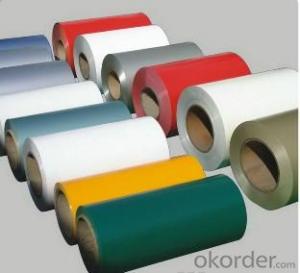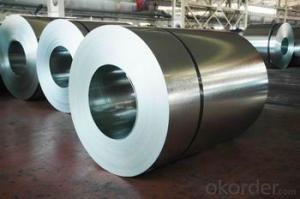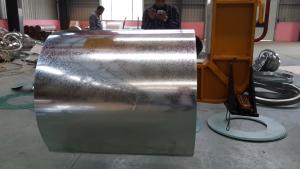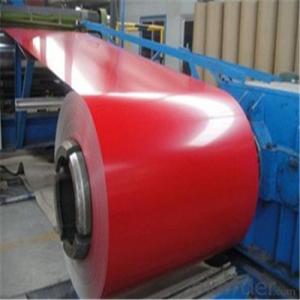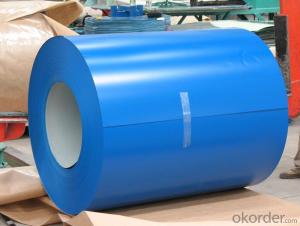Hot-dip Galvanized Steel Coil with High Quality
- Loading Port:
- Tianjin
- Payment Terms:
- TT OR LC
- Min Order Qty:
- 50 m.t.
- Supply Capability:
- 5000 m.t./month
OKorder Service Pledge
OKorder Financial Service
You Might Also Like
Hot-Dip Galvanized Steel Coil Used for Industry
1.Structure of Hot-Dip Galvanized Steel Coil Description
Hot-dip galvanized steel coils are available with a pure zinc coating through the hot-dip galvanizing process. It offers the economy, strength and formability of steel combined with the corrosion resistance of zinc. The hot-dip process is the process by which steel gets coated in layers of zinc to protect against rust. It is especially useful countless outdoor and industrial applications.
2.Main Features of the Hot-Dip Galvanized Steel Coil
•High Purity
•Easy control and operation
•High strength
•Fast melting
•Competitive price
•Best Service
3. Hot-Dip Galvanized Steel Coil Images
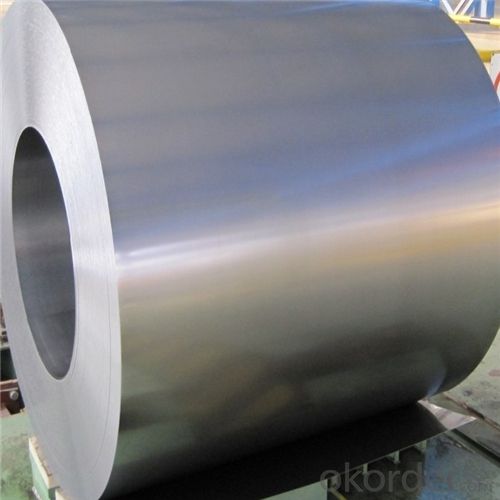
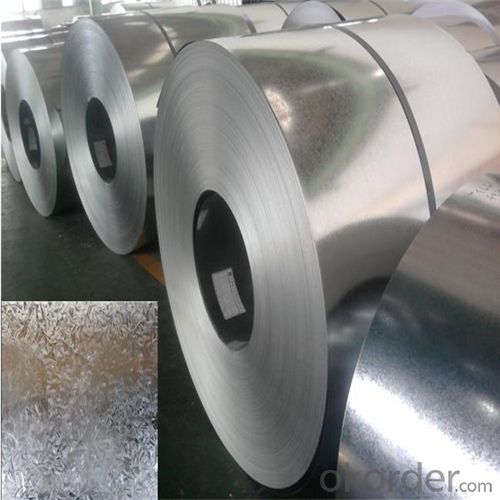
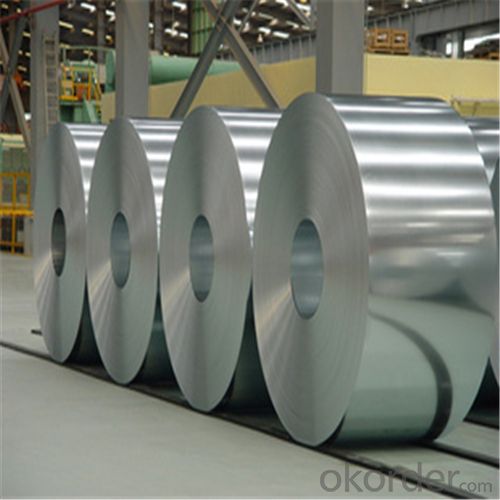
4. Hot-Dip Galvanized Steel Coil Specification
Hot-Dip Galvanized Steel Coil | |
Thicknenss | 0.10mm-5.00mm |
Width | 2000mm max |
Coating mass | 30-600g/㎡ |
Spangle | Regular/Minimized/Zero Spangle |
Coil inner diameter | 508-610mm |
Surface treatment | Chromated/non chromated, Oiled/non oiled, Anti finger print |
5.FAQ of Hot-Dip Galvanized Steel Coil
We have organized several common questions for our clients,may help you sincerely:
①How about your company?
A world class manufacturer & supplier of castings forging in carbon steel and alloy steel,is one of the large-scale professional investment casting production bases in China,consisting of both casting foundry forging and machining factory. Annually more than 8000 tons Precision casting and forging parts are exported to markets in Europe,America and Japan. OEM casting and forging service available according to customer’s requirements.
②How to guarantee the quality of the products?
We have established the international advanced quality management system,every link from raw material to final product we have strict quality test;We resolutely put an end to unqualified products flowing into the market. At the same time, we will provide necessary follow-up service assurance.
③How long can we receive the product after purchase?
In the purchase of product within three working days, We will arrange the factory delivery as soon as possible. The pecific time of receiving is related to the state and position of customers.Commonly 7 to 10 working days can be served.
- Q: How are steel coils protected against scratches and damage?
- Steel coils are protected against scratches and damage through a variety of methods. One common method is the application of a protective coating or film on the surface of the coils. This coating acts as a barrier, preventing direct contact between the steel surface and any potential sources of scratches or damage. The protective coating can be made of materials like polyethylene, PVC, or other types of plastic that are resistant to abrasion and impact. Additionally, steel coils are often wrapped or packaged using materials such as paper, cardboard, or plastic. This wrapping provides an extra layer of protection against scratches and damage during storage, transportation, and handling. The wrapping material acts as a cushion, absorbing any potential impacts or friction that could lead to scratches. Furthermore, steel coils may be stored and transported in specially designed containers or pallets that are equipped with features to minimize the risk of damage. For instance, these containers or pallets may have padded interiors, secure fastenings, or dividers that keep the coils in place and prevent them from rubbing against each other. In some cases, steel coils are also stored or transported in a controlled environment to minimize the risk of damage. This can include temperature-controlled warehouses or shipping containers that help to prevent the formation of moisture, which can lead to corrosion or other types of damage. Overall, a combination of protective coatings, wrapping materials, specialized containers, and controlled environments is employed to ensure that steel coils are adequately protected against scratches and damage throughout their lifecycle.
- Q: Suppose you made a sword out of diamond (just follow me here, it's only theoretical). Would it be lighter than a sword of the same size made out of steel?
- steel is heavier. 6.5 mm/1 carat of steel is 7 grams, while diamond is 1/5 a gram
- Q: Can steel coils be coated with anti-microbial materials?
- Yes, steel coils can be coated with anti-microbial materials to provide protection against the growth of bacteria and other microorganisms.
- Q: Why can hot rolled coils be placed outside?
- Because the stress of participation should be eliminated
- Q: How are steel coils protected during shipping?
- Steel coils are protected during shipping through a variety of measures to ensure their safety and prevent damage. One common method is the use of steel coil cradles or saddles. These are specially designed structures that hold the coils securely in place and prevent them from shifting or rolling during transit. The cradles are typically made of sturdy steel or other durable materials and are specifically engineered to withstand the weight and pressure of the coils. In addition to the cradles, steel coils are often wrapped in protective materials such as plastic or paper. This wrapping acts as a barrier, shielding the coils from moisture, dust, and other potential contaminants that could affect their quality. The wrapping is typically applied tightly to the coils, ensuring that it stays in place throughout the shipping process. To further safeguard the coils, they are often loaded into shipping containers or onto flatbed trucks using specialized equipment. This equipment, such as coil hooks or lifting clamps, allows for safe and secure handling of the coils, minimizing the risk of accidents or damage during loading and unloading. In some cases, steel coils may also be packed into wooden or metal crates for added protection. These crates provide an extra layer of security and help to prevent any potential impacts or rough handling from causing damage to the coils. Overall, the protection of steel coils during shipping is of utmost importance to ensure that they arrive at their destination in optimal condition. By utilizing cradles, protective wrapping, specialized equipment, and additional packaging when necessary, the risk of damage is significantly reduced, allowing for a smooth and successful transportation process.
- Q: What are the different types of steel coil storage methods?
- There are several types of steel coil storage methods, including stacking coils directly on the floor, using racks or shelves, utilizing coil cradles, employing coil saddles, and implementing coil cars or trucks for transportation and storage.
- Q: Can steel coils be coated with weather-resistant materials?
- Yes, steel coils can be coated with weather-resistant materials. These coatings provide protection against corrosion, moisture, UV rays, and other environmental factors, helping to enhance the durability and longevity of the steel coils, especially when used in outdoor or exposed applications.
- Q: How are steel coils used in the production of steel pipes?
- Steel pipes rely on steel coils as a vital element in their production. These coils serve as the primary material for manufacturing the pipes. The initial phase of the process involves unwinding the steel coil and introducing it into a machine referred to as a slitter. The slitter then cuts the coil into narrower strips of the desired width. This width plays a crucial role as it determines the diameter of the resulting steel pipes. Once the steel coil has been sliced into strips, the subsequent step is to feed these strips into another machine known as a forming mill. The forming mill gradually shapes the strips into a cylindrical form by passing them through a sequence of rollers. These rollers apply pressure and bend the strips until they assume the shape of a pipe. To ensure the pipes' durability and strength, they undergo a welding procedure. The ends of the strip are heated and fused together using a high-frequency electric current, creating a seamless weld along the entire length of the pipe. This weld provides structural integrity and prevents any leakage or weak points in the pipe. After the welding process, the pipes undergo a sizing and shaping procedure. They are passed through additional rollers, gradually reshaping them to achieve the desired dimensions, including the final outer diameter and wall thickness. Finally, the pipes are cut to the desired length and undergo various finishing procedures, such as straightening, testing, and coating. These finishing steps guarantee that the pipes meet the required specifications and are ready for use in various applications, such as plumbing, construction, and the oil and gas industries. In conclusion, steel coils serve as the foundation for the production of steel pipes. They are slit, formed, welded, sized, shaped, and finished to create robust and high-quality pipes suitable for diverse industries.
- Q: I was wondering if steel cases can be loaded to the same pressure as brass cases. Are the cartridges that commonly feature steel cases like the Russian 5.45x39, 7.62x39 and 7.62x54R loaded to a lower pressure than their C.I.P. MAPs (380 MPa, 355 MPa, 390 MPa --gt; 51,488 psi to 56,564 psi)? There must be a reason why most NATO armies use brass cases...
- Steel cases are harder to manufacture, but cheaper in material. Loaded? Yes. Those cases are a very mild steel, and will 'flow' well enough to seal at the pressures involved. The question might come up with low pressure loads though. RE-loaded?? - I wouldn't try it, even if they weren't berdan primed.
- Q: What are the common methods of transporting steel coils?
- There are several common methods of transporting steel coils, depending on the distance, quantity, and specific requirements of the shipment. The most commonly used methods include: 1. Flatbed trucks: This is the most basic and widely used method for short-distance transportation of steel coils. Flatbed trucks have a flat, open trailer bed that allows for easy loading and unloading of the coils. The coils are secured and strapped down to prevent movement during transit. 2. Rail transport: For longer distances, rail transport is often preferred due to its cost-effectiveness and efficiency. Coils are loaded onto specially designed railcars, known as coil cars or gondola cars, which have curved troughs or cradles to hold the coils securely in place. This method is particularly advantageous for large quantities of steel coils. 3. Ocean freight: When transporting steel coils internationally or over long distances across oceans, shipping by sea is a common method. The coils are typically loaded into specialized shipping containers, known as coil containers or coiled steel containers, which have internal cradles to prevent movement and damage during transit. These containers are then loaded onto cargo ships for transportation. 4. Barge transport: In regions with navigable waterways, barges can be used to transport steel coils. Similar to ocean freight, the coils are loaded into specially designed containers or barges with cradles to secure them during transport. Barges offer an economical and environmentally friendly option, especially for inland waterway transportation. 5. Intermodal transport: In some cases, a combination of different modes of transportation may be used for transporting steel coils. This is referred to as intermodal transport. For example, steel coils may be initially transported by truck to a rail yard, where they are then loaded onto railcars for long-distance transport. This method allows for the advantages of different modes of transportation to be combined, optimizing cost and efficiency. It is worth noting that the specific method of transporting steel coils may vary depending on factors such as coil size, weight, destination, and any specific handling requirements.
Send your message to us
Hot-dip Galvanized Steel Coil with High Quality
- Loading Port:
- Tianjin
- Payment Terms:
- TT OR LC
- Min Order Qty:
- 50 m.t.
- Supply Capability:
- 5000 m.t./month
OKorder Service Pledge
OKorder Financial Service
Similar products
Hot products
Hot Searches
Related keywords
